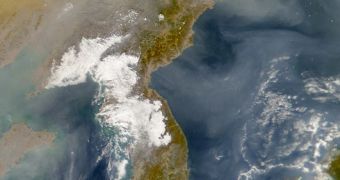The tremendous amounts of fossil fuel burnt by developing Asian countries, including China and India, are the main source for the newest threat posed by pollution, namely brown clouds. These clouds, made up of soot, dust particles, and a great diversity of chemicals spilled into the atmosphere by various factories, significantly affect the amount of light many large cities in Asia and Arabic Peninsula receive, including places like Beijing, Cairo, Hong Kong and Shanghai.
Also, they offer the ideal conditions for the formation of extreme weather events, which, coupled with heating – caused by soot particles trapping heat, in a 3-kilometer-thick layer, stretching from the Arabic Peninsula to Japan – are the underlying cause for the melting of glaciers, especially in the Himalayas. As these ice spreads supply water to most of the area and are also the second largest ice concentration, next to the polar caps, they pose a direct threat to the water supply of the region.
The food supply is also threatened by the dimming. Less sunlight means less photosynthesis, which, in turn, implies that many plant will not survive agricultural cycles.
"Imagine for a moment a 3-kilometer-thick band of soot, particles, a cocktail of chemicals that stretches from the Arabic Peninsula to Asia. All of this points to an even greater and urgent need to look at emissions across the planet because this is where the stories are linked in terms of greenhouse emissions and particle emissions and the impact that they're having on our global climate," said U.N. undersecretary general, Achim Steiner, who is also the executive director of the U.N. environment program.
What's even more troubling about these brown clouds is that they can travel extremely fast, covering the entire stretch of the Asian continent in under 4 days. This means that the danger is no longer localized, but that it threatens approximately one third of the global population, if not more.

 14 DAY TRIAL //
14 DAY TRIAL //